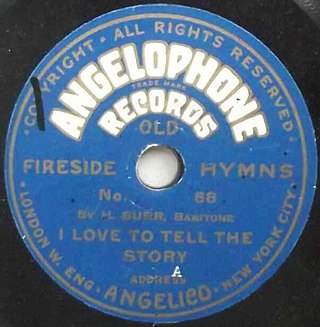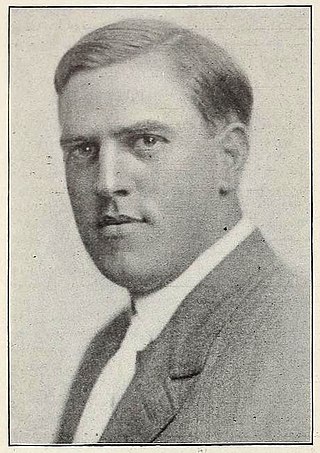
Decca Records is a British record label established in 1929 by Edward Lewis. Its US label was established in late 1934 by Lewis, Jack Kapp and Milton Rackmil, who later became American Decca's president too. In 1937, anticipating Nazi aggression leading to World War II, Lewis sold American Decca, and the link between the UK and US Decca label was broken for several decades. The British label was renowned for its development of recording methods, while the American company developed the concept of cast albums in the musical genre.
Arto Records was a record company and label that operated from 1920 to 1923.

Van Dyke Records was a budget American record label which operated in 1929 and 1930. Van Dyke was a subsidiary of Grey Gull Records of Boston, Massachusetts and releases duplicated material found on the parent label. Despite claims of quality found on the label, the record was cheaply manufactured, and marketed to record dealers as a budget record with a high profit margin for the dealer. Accordingly the playing surface is noisy, and the recordings are often over-modulated.

Domino Records was an American record label, in existence from 1924 to 1933.
Discography is the study and cataloging of published sound recordings, often by specified artists or within identified music genres. The exact information included varies depending on the type and scope of the discography, but a discography entry for a specific recording will often list such details as the names of the artists involved, the time and place of the recording, the title of the piece performed, release dates, chart positions, and sales figures.

Leonard Geoffrey Feather was a British-born jazz pianist, composer, and producer, who was best known for his music journalism and other writing.

Marie Novello, also known as Marie Novello Williams was a Welsh pianist. She was one of Theodor Leschetizky's last students and performed in public from childhood. Her early death cut short a promising career just as she began to record for one of the major English labels, having already amassed a considerable discography for one of its second-rank competitors.
Piero Coppola was an Italian conductor, pianist and composer.
Brian Arthur Lovell Rust was an English jazz discographer.
Olli Mustonen is a Finnish pianist, conductor, and composer.

Aretino was a United States record label, in business from about 1907 to 1914.

Annie's Cousin Fannie, which is sometimes listed as "Annie's Cousin Fanny", is a 1934 song composed by Glenn Miller and recorded by The Dorsey Brothers Orchestra for Brunswick and Decca Records. The Dorsey Brothers released two versions of the song in 1934 and 1935.

"Tomorrow's Another Day" is a 1935 song composed by Glenn Miller for the Dorsey Brothers Orchestra. The song was released as a 78 single by the Dorsey Brothers Orchestra on Decca Records.

"Harlem Chapel Chimes" is a 1935 jazz instrumental composed by Glenn Miller. The song was released as an A-side 78 single by the Dorsey Brothers Orchestra.

Angelophone was a short-lived producer of disc phonographs and a record label founded in 1916 by Charles Taze Russell of the Watchtower, later known as Jehovah's Witnesses. In Watch Tower, 15 March 1917, it was announced that the company would go out of business. The Angelophone disappeared from the Watchtower society's cost list after 1919.

The All-Star Trio or All Star Trio was a musical ensemble consisting of George Hamilton Green on the xylophone along with Frank Banta or Victor Arden on the piano and F. Wheeler Wadsworth on the saxophone. It was among the most popular musical outfits of the very early Jazz Age. Their music was promoted as "dance music".

Harry A. Yerkes (1872-1954) was a marimba player, inventor, and recording manager who assembled many recording sessions in the early years of jazz. Many of the sessions organized by Yerkes used his name for the artist credit, including Yerkes' Jazarimba Orchestra and Yerkes' Marimbaphone Band on Columbia Records, which are estimated to have some of the best selling records of 1919 and 1921.
Edison Bell was an English company that was the first distributor and an early manufacturer of gramophones and gramophone records. The company survived through several incarnations, becoming a top producer of budget records in England through the early 1930s until, after it was absorbed by Decca in 1932, production of various Edison Bell labels ceased.
Domino Records was a United States producer of early phonograph records. The company was originally named Empire Phonograph Corporation, but changed their name to Domino Phonograph Corporation in 1915, apparently before producing any products. The label debuted June 1916. They produced two-sided, 7-inch fine-groove vertical-cut disc records with a light-blue label and dark-blue lettering. Domino advertised their playing time as equal to that of a 10-inch disc. Playing time was actually around two-and-a-half minutes. The discs were marketed by two different companies; out of New York by the W.R. Anderson Company, and out of Dayton, Ohio, by the Thomas Manufacturing Company. Domino Records also made 7-inch pressings for other concerns, including Concert Records, Domestic Records, and Melodograph Records. In February 1917 a 10-inch red disc was introduced by Domino.
The Discography of American Historical Recordings (DAHR) is a database catalog of master recordings made by American record companies during the 78rpm era. The 78rpm era was the time period in which any flat disc records were being played at a speed of 78 revolutions per minute. The DAHR provides some of these original recordings, free of charge, via audio streaming, along with access to the production catalogs of those same companies. DAHR is part of the American Discography Project (ADP), and is funded and operated in partnership by the University of California, Santa Barbara, the National Endowment for the Humanities, and the Packard Humanities Institute.












